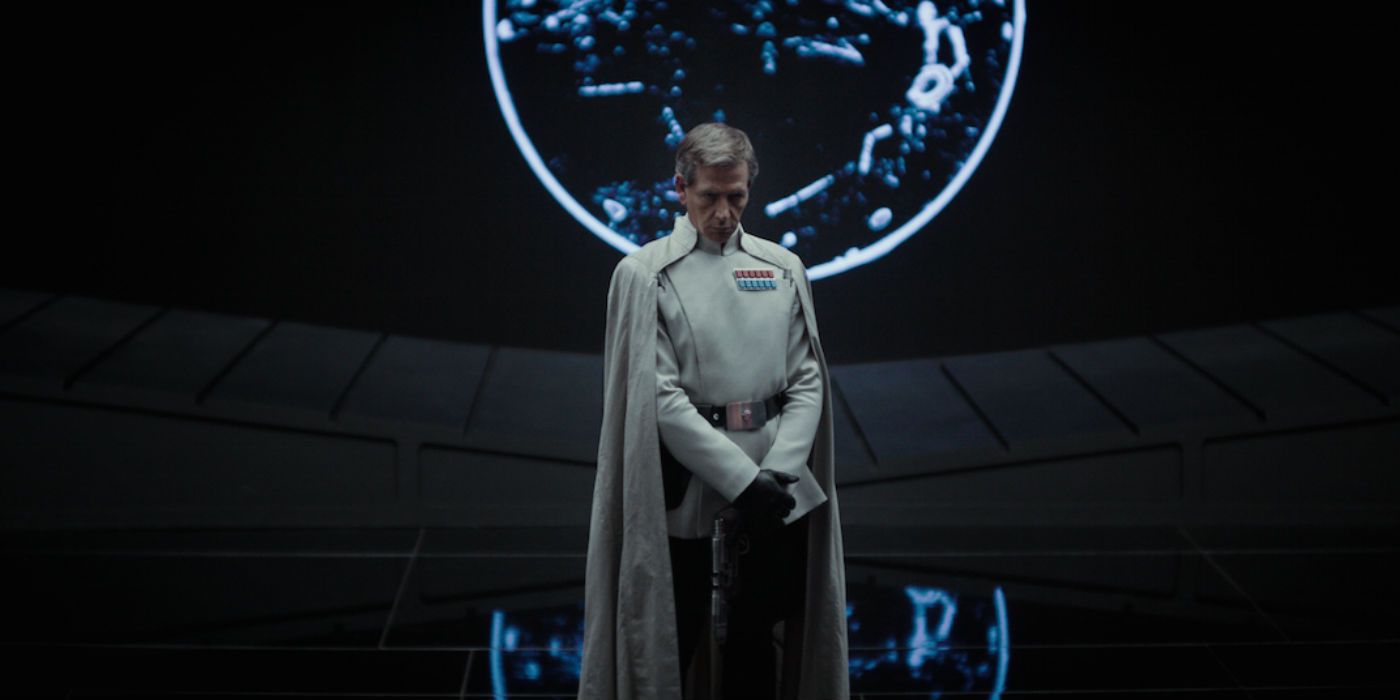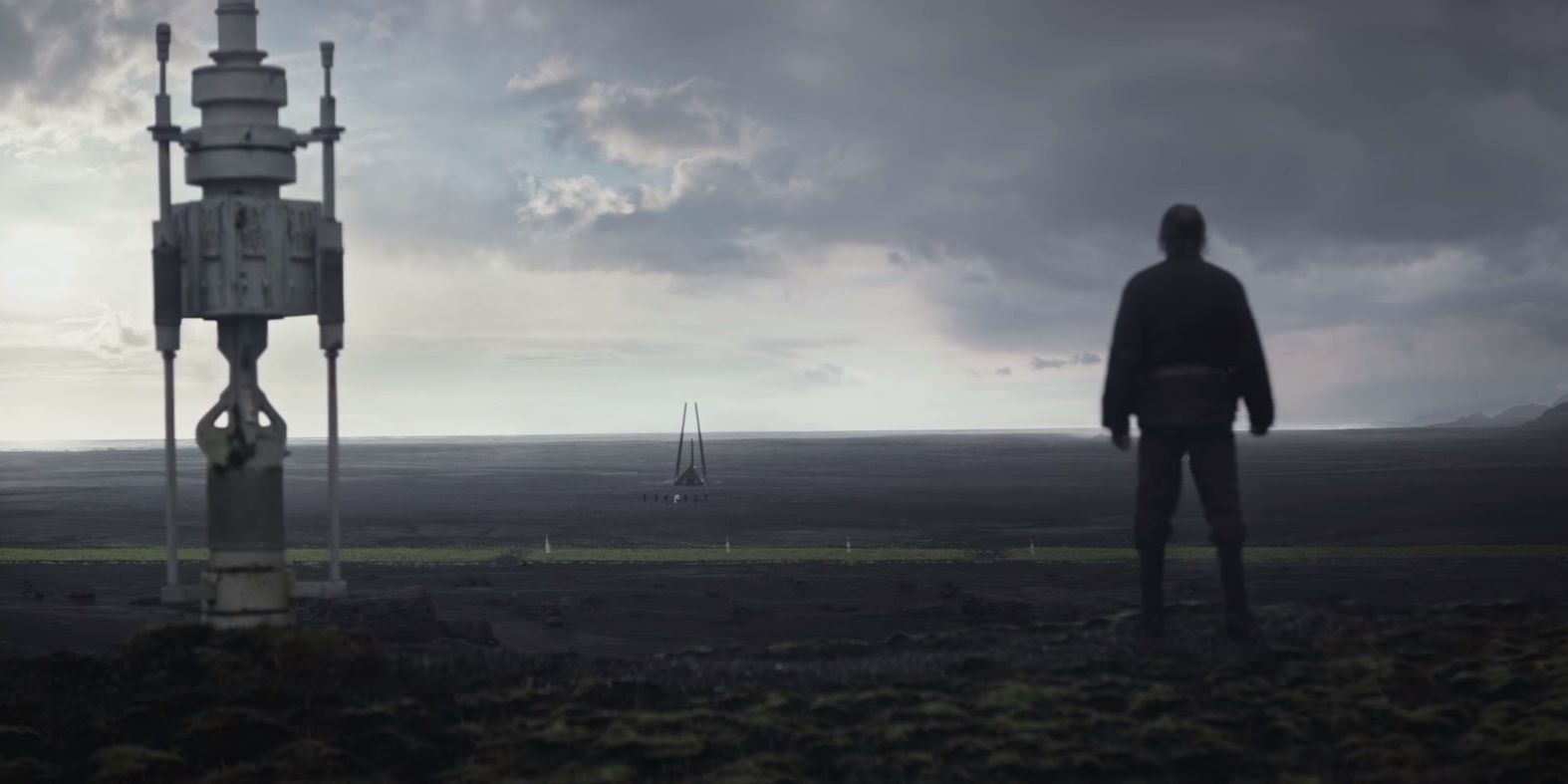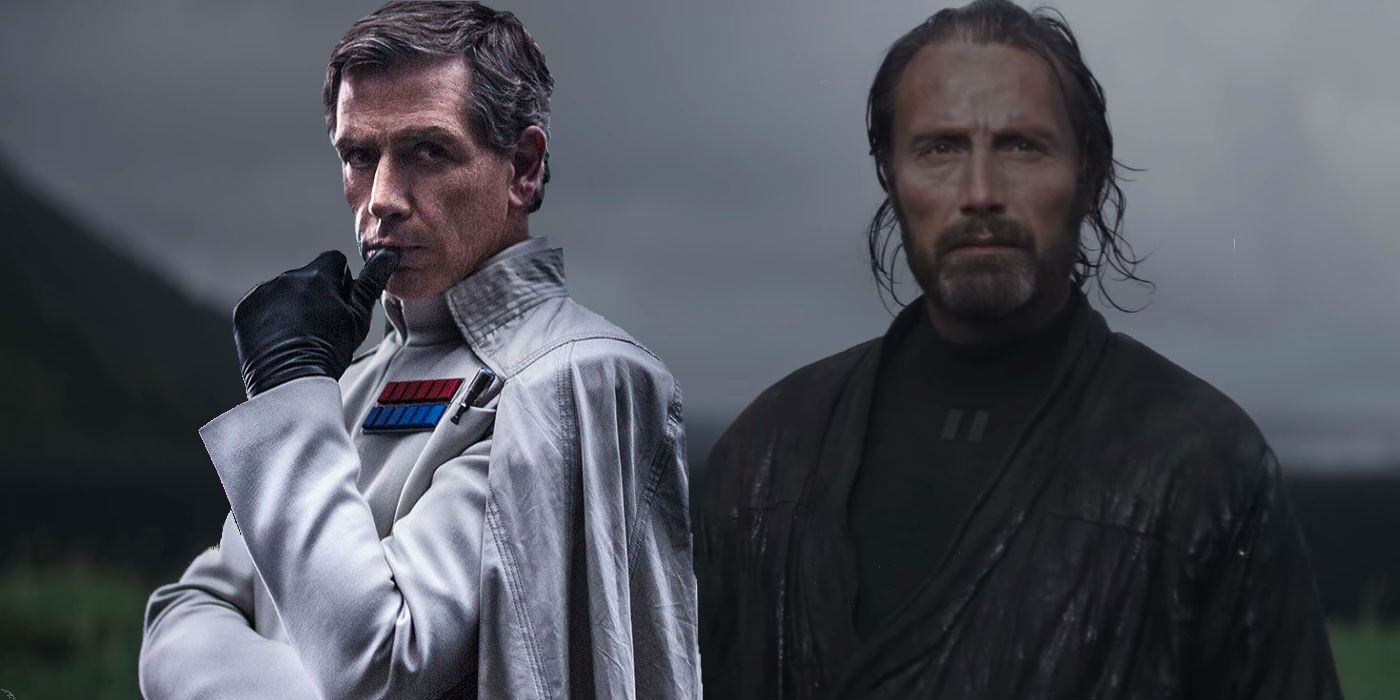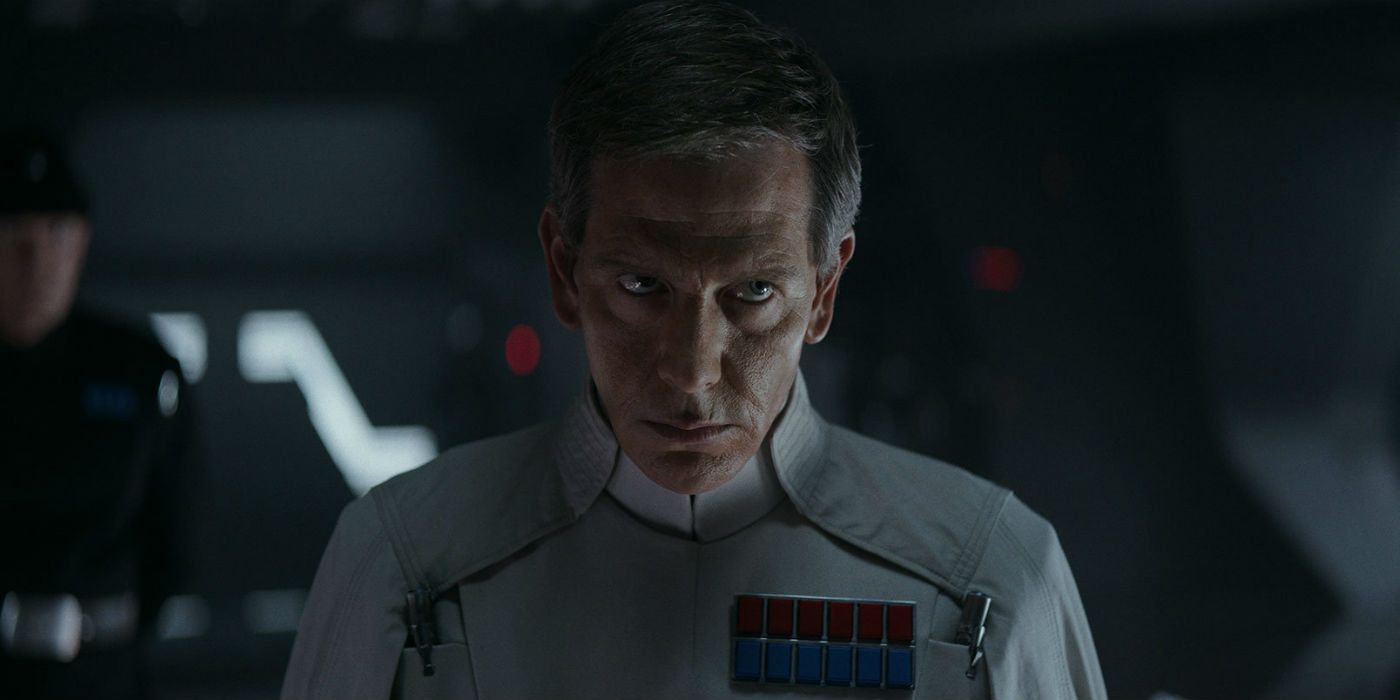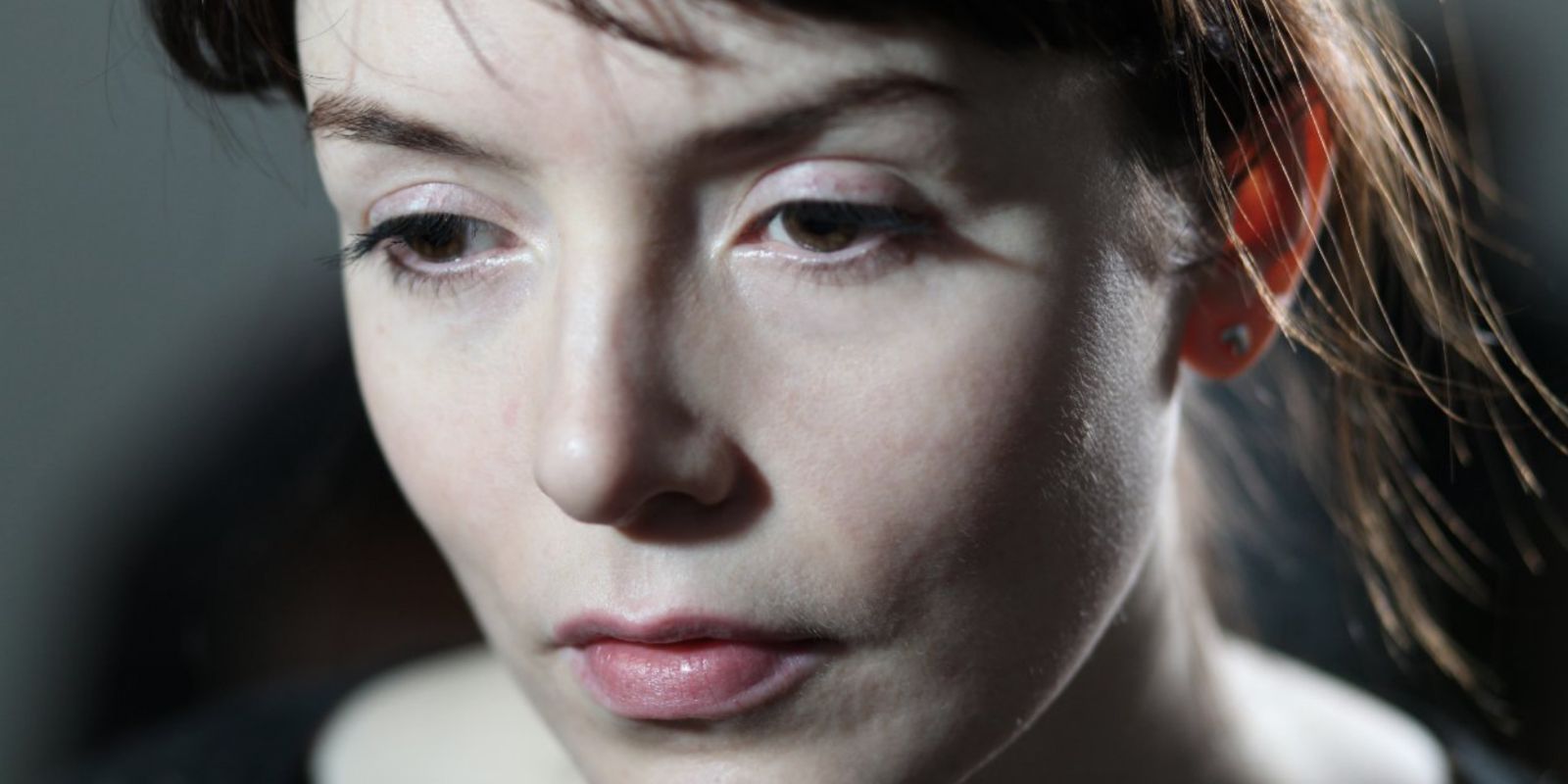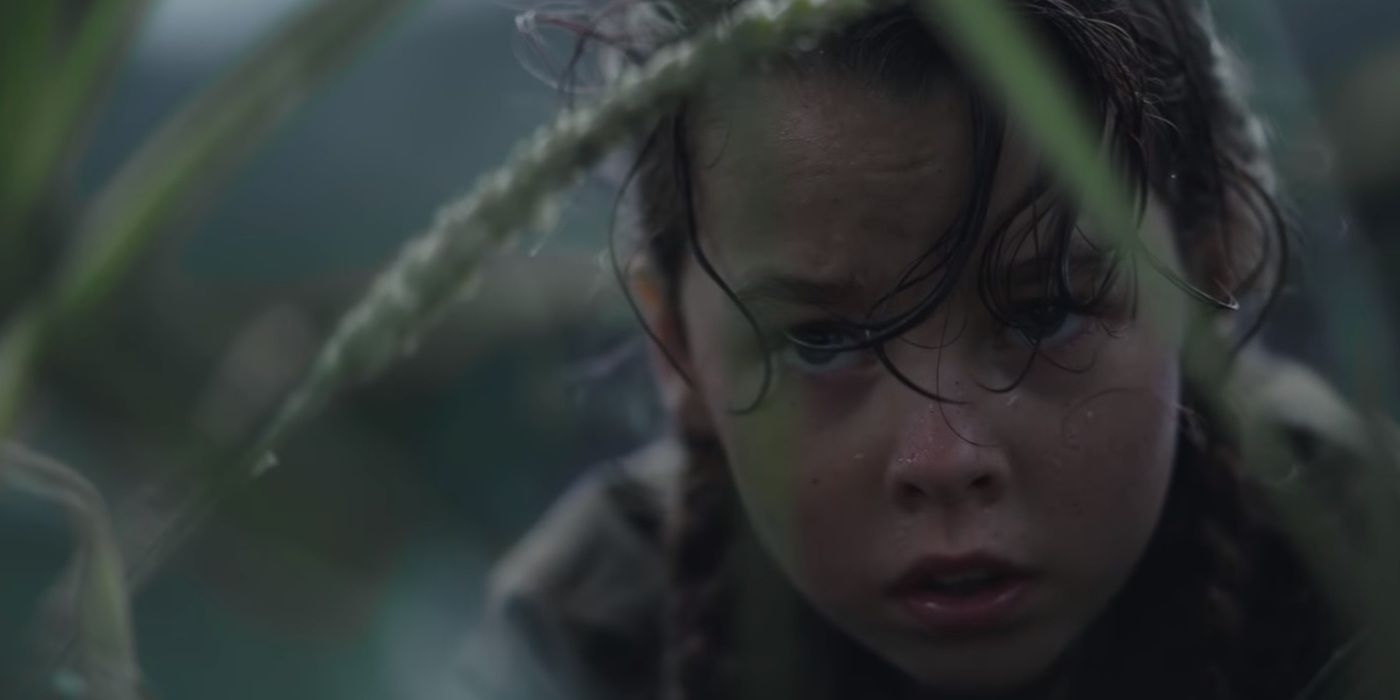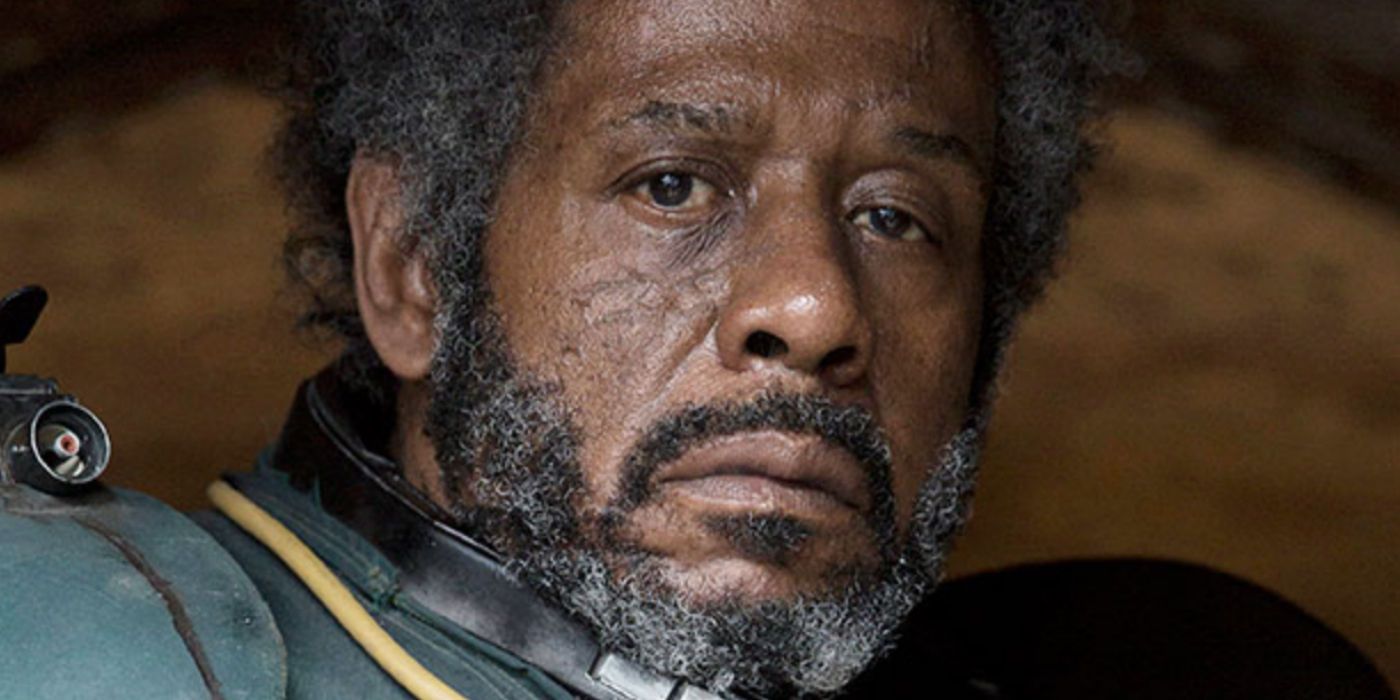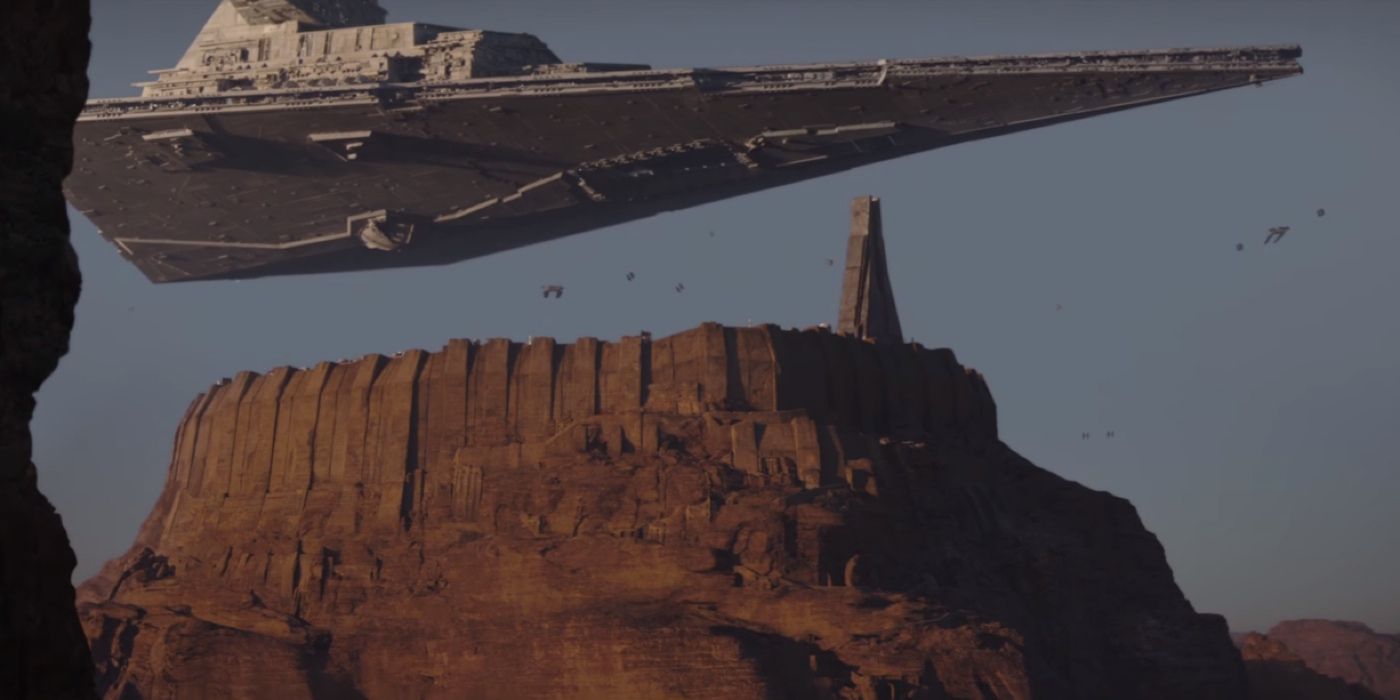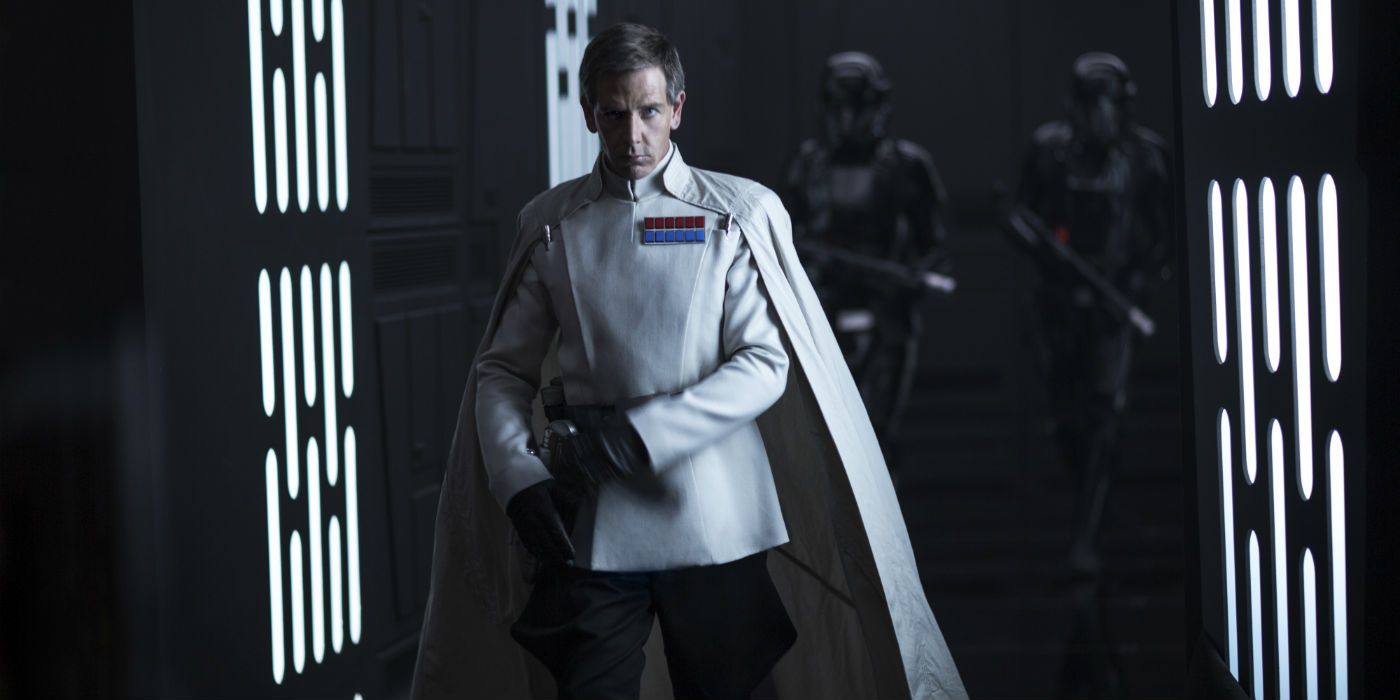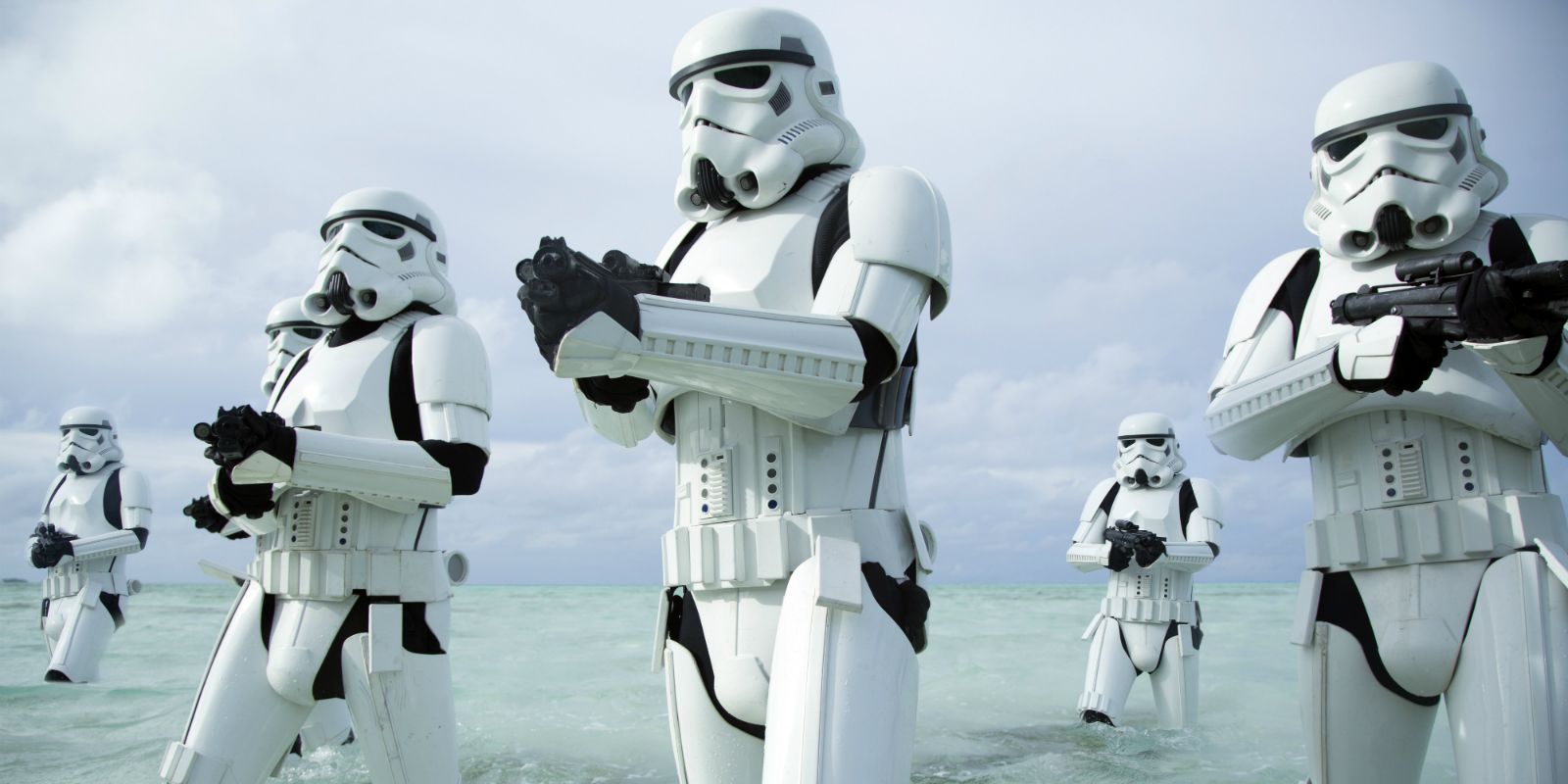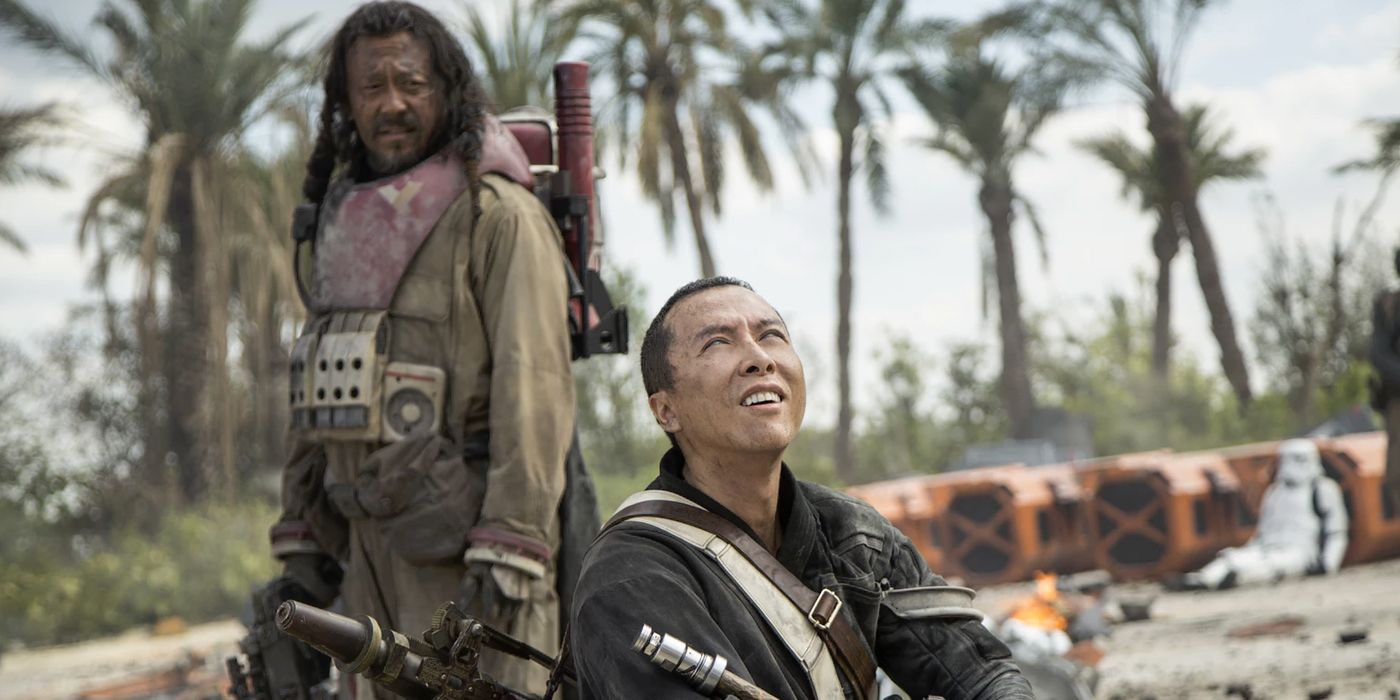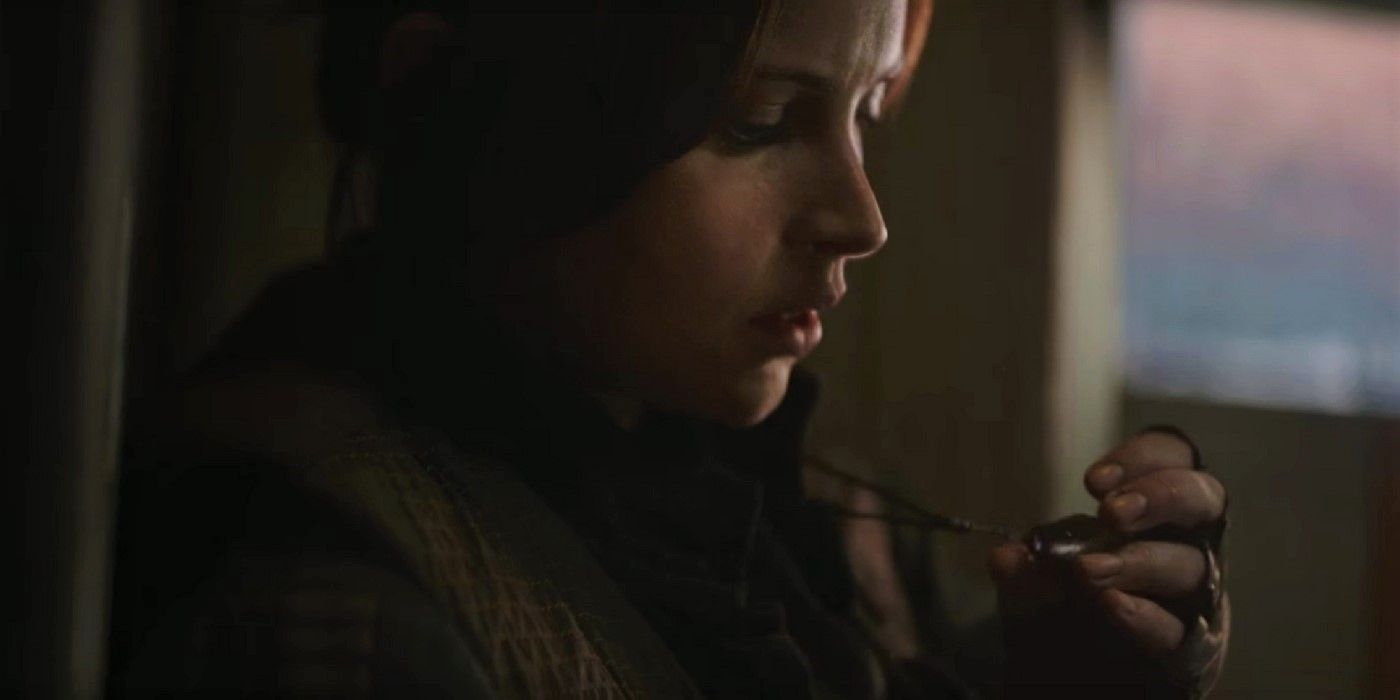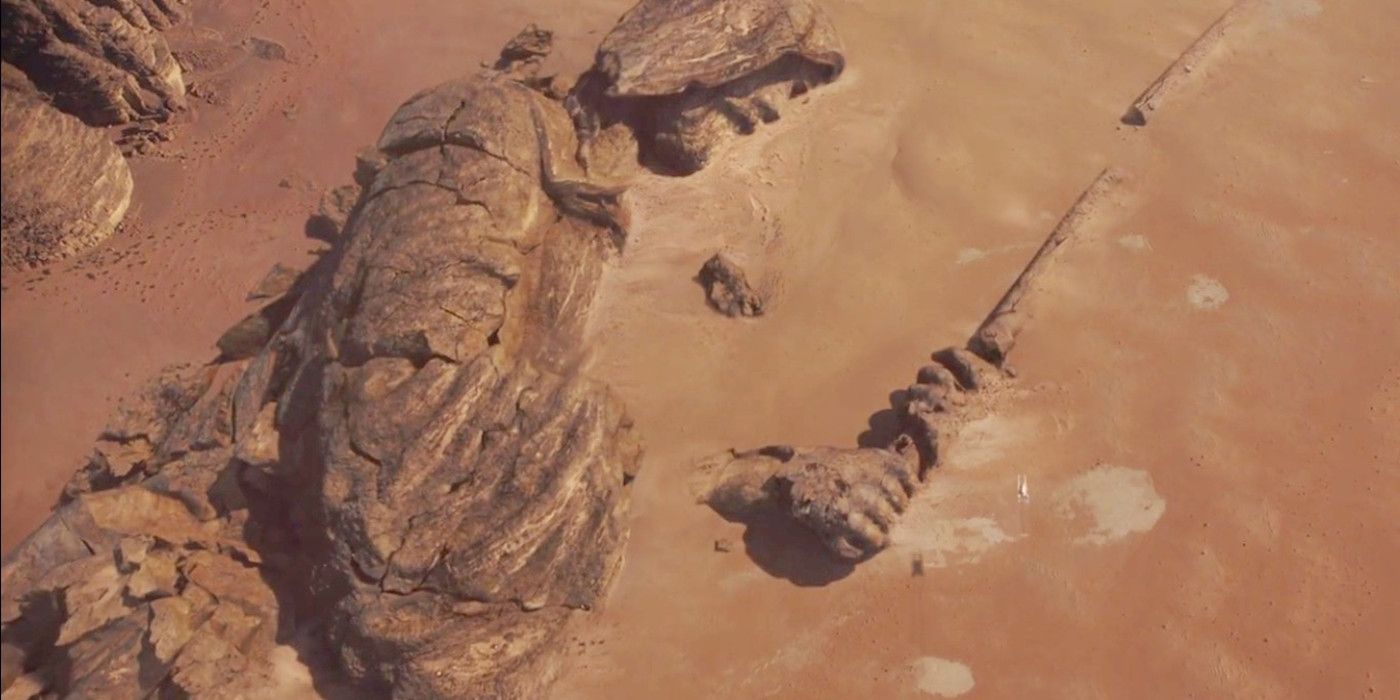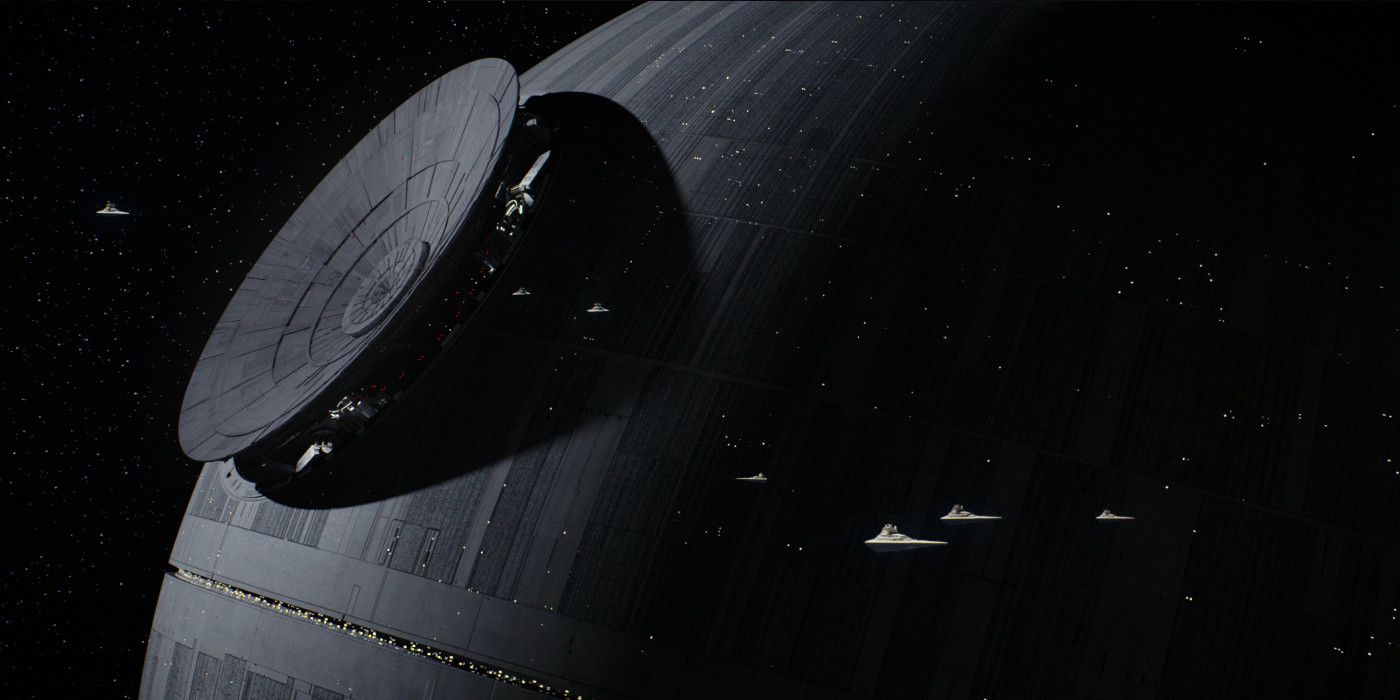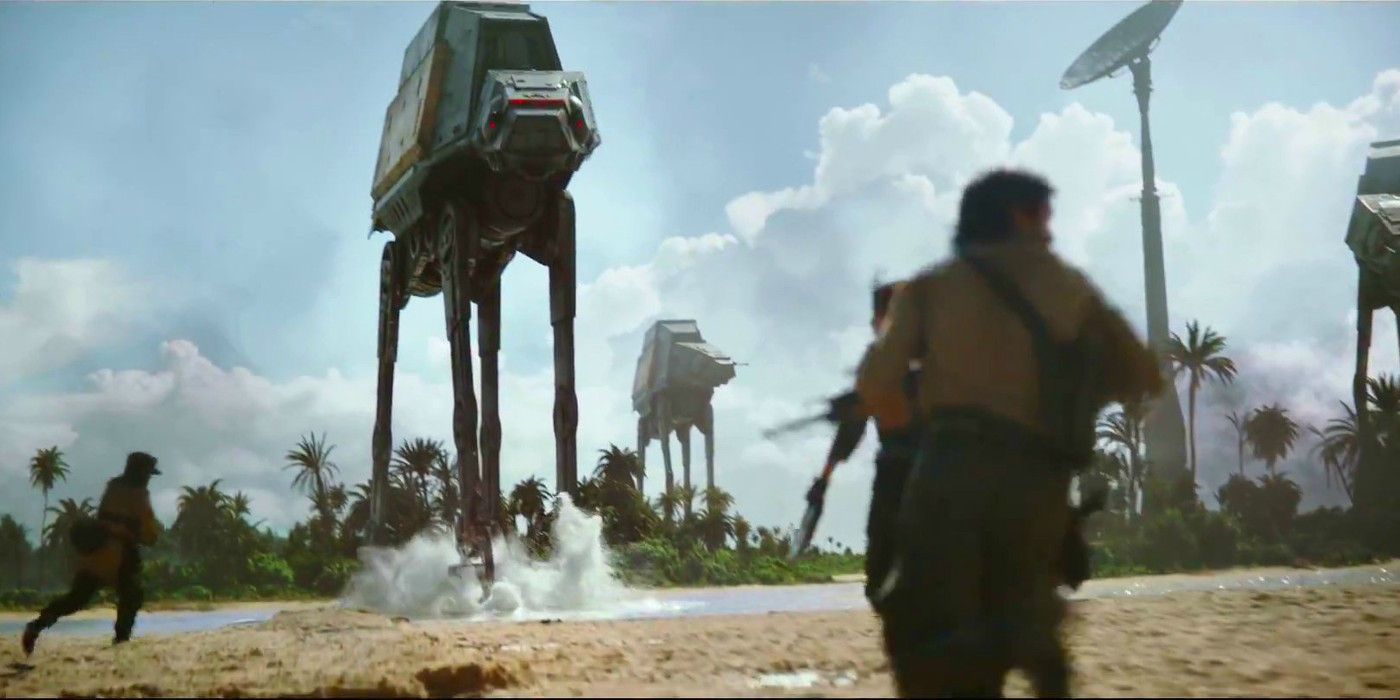Since the idea of sitting in a cinema seat for ten hours sounds horrific, books will always have a slight advantage over films when it comes to packing detail. For the same reason, the two mediums shouldn’t really be compared. It’s like saying older people are better because they have more wrinkles. But that doesn’t stop a book drastically enhancing one’s experience of a film if they’re looking for extra background on a character or wider context to a story. James Luceno’s Star Wars Catalyst does exactly that. It sets the scene perfectly for Rogue One and bridges the gap between the prequels and original trilogy.
If you’ve seen Rogue One there might be a few things that left you confused or feeling that you’ve missed out on a highly relevant backstory. If that’s the case you could really benefit from reading Catalyst. Here are 14 Ways Star Wars Catalyst Enhanced Rogue One.
14. SETTING THE SCENE
Despite Rogue One being an opening crawl in itself, there is an argument to be had that, of all the Star Wars films, this is the one that really needed some exposition. Without it, we could end up in a chicken and egg situation where every single film needs a prequel to explain how we got to a certain point, while never being able to reach an initial story that set everything into motion.
Luckily, we have books. And in this instance, Star Wars Catalyst perfectly sets the scene for Rogue One, tying into the beginning of the film as well as the film ties into the beginning of A New Hope. The Clone Wars have come to an end and the Empire is now spreading across the galaxy.
When we arrive on Lah’mu, the planet in which the Erso family have been hiding from the Empire, it’s immediately familiar to anyone who’s read Catalyst. Others must have felt like memory wiped droids, having been dropped straight into the action without much context. Who are all these characters? How do they all know each other? Why does she want to shoot him in the face? It’s almost as if it needed scrolling text explaining all of this at the beginning.
13. GALEN ERSO AND ORSON KRENNIC'S RELATIONSHIP
One of the most interesting story elements of Catalyst is the relationship between Galen Erso and Director Orson Krennic. If you only watch the film, you might get the impression that Galen has always hated and feared Krennic, but that’s not the case at all. The book details how, at one stage, they were actually high school bros. Galen was the freakishly intelligent one with orthopaedic headgear, sitting at the front of the classroom, while Krennic was the less gifted, but ruthlessly determined hall monitor sort.
As Krennic is appointed the Empire’s director of military operations, he uses his friendship with Galen to manipulate him into building the Death Star’s weapon. Galen’s work solely concerns using Kyber crystals to generate renewable energy, but Krennic has another team of scientists working on a way to weaponize his research.
Krennic has to play it cool: grin and bear Galen's family while sipping drinks in their living room, all the while harboring intentions of genocide. Knowing how their friendship fell apart adds a whole new dimension to the scenes between the two characters in Rogue One.
12. KRENNIC PLAYING THE LONG GAME
Tying nicely into that last point, Catalyst does a great job of showing just how manipulative and evil Krennic is; perhaps even more effectively than Rogue One. In the book we see how determined he is to see the Death Star project through, to the extent that he stretches his manipulation of Galen out over several years. He’s under pressure from Grand Moff Tarkin to produce results with the battle station’s weapon, but he knows it can’t be rushed. He has Galen’s trust and any sign of forceful behaviour might cause him to smell the enormous sack of fish.
In the film, while Krennic is still clearly determined and twisted, we don’t get to see his manipulative side. We also don’t really get to see why the Death Star project means so much to him. If you read Catalyst, everything he does in Rogue One becomes more meaningful - his failures, his triumphs, and his trying not to get Force choked by an impatient Darth Vader.
11. LYRA ERSO'S INVOLVEMENT
Here’s another spoiler in case you hadn’t already realized this list is full of them: Lyra Erso dies straight away in Rogue One. I was kind of expecting this, but when you consider how big a part she plays in Catalyst, it really is a shame that all she gets to do is mumble something generic about the Force, give Jyn a Kyber crystal necklace and then froth at the mouth a bit before being ended by a Deathtrooper. In the book she’s actually instrumental in moving the story along, due to her suspicions of Krennic.
She’s the only thing between her husband, Galen, and Krennic, and often the main source of sense. So when Krennic describes her as “troublesome as ever” in Rogue One, readers of Catalyst will appreciate that this is not just a throwaway line, like C-3PO claiming he was the chief negotiator for the entire Manakron system. It’s actually because she’s been the voice of reason in Galen’s ear, foiling Krennic’s attempts to corrupt her husband. What a nuisance.
10. JYN ERSO'S BACKSTORY
At the start of Rogue One we get to see how a young Jyn Erso ended up on her own. Her mother is killed and her father is taken away to continue work on the Death Star. What we don’t get to see is the intimate moments between her and her parents, the feistiness within her growing and how Galen came up with the pet name ‘Stardust’. There’s a lot of her rebelling and battering Stormtroopers with a truncheon, but her past still remains somewhat of a mystery.
As Catalyst is set over several years, we get to see Jyn grow from a baby into a young child – as humans tend to do. She’s actually born in a prison on a Separatist sympathizing planet. Pretty much for the rest of her life she ends up getting caught in the middle of the war, one time almost being gunned down in her mother’s arms. Thankfully, the heroic duo of Emperor Palpatine and Darth Vader deactivated all of the droids just in time. Thanks to James Luceno’s ironic foreshadowing, we get to see how Jyn was always destined for greatness.
9, THE RELEVANCE OF SAW GERRERA
For those who watch the animated TV series The Clone Wars, Saw Gerrera will be a familiar figure. But you probably weren’t expecting Forest Whitaker’s wheezy-voiced take on the character, let alone his mad scientist hair. Well, several years of battle have taken their toll on Saw by the time we see him in Rogue One; he now sucks air out of a mask and walks on two prosthetic legs. But why is he so significant in Rogue One?
The film does as much as explain that he was Jyn’s guardian in the absence of her parents, but Catalyst sheds further light on how he came to be involved with the Ersos in the first place. He’s actually instructed by a smuggler named Has Obitt to get them out of Coruscant and fly them as far away from the Empire as possible. It’s Saw who helps them find a new planet and tells them to signal him in case of an emergency. And yeah, there’s the beginning of the film right there.
8. ETABLISHING LOCATIONS
The film does a good job of establishing all of the new planets, relentlessly captioning them at the start. Some of them will already be familiar to anyone who’s read Catalyst, and they’ll probably make smug noises when watching the film to indicate so.
I’ve already mentioned Lah’mu the marshy world in which the Ersos inhabit, but one of the other planets mentioned in Catalyst is Jedha, which is basically Mecca for the Jedi. It’s their spiritual home and the location of the Temple of Whills, a structure considered sacred by those who followed the teachings of the Church of the Force. It’s also absolutely packed with Kyber crystals. Lyra in particular is a strong believer in the Force, which is something else that’s only slightly touched on in the film. Thanks to Catalyst, Jedha now has even more significance. Technically, it’s actually a desert moon, but it looks like we’re giving it the Endor treatment.
7. KRENNIC AND TARKIN'S RIVALRY
After Galen and Krennic’s conflict, the most interesting one is between Krennic and Grand Moff Tarkin. Out of necessity, this was given a lot of screen time in Rogue One, definitely because they had to show how Tarkin ended up in control of the Death Star project and not Krennic. But in Catalyst it shows the extent to which they both went to vie for power, like two crows trying to push each other off the top branch.
Since they kind of have to be nice to each other’s face, their battle is very much a tactical one. It mainly consists of pushing blame onto one another and highlighting their failures. But at one point, Krennic actually manages to distract the Grand Moff by drawing him into a battle with rebellious smugglers. It’s the only occasion that Krennic is able to exploit Tarkin’s inability to turn down a good fight. Now I understand why he snarls at him so aggressively in Rogue One.
6. THE RISE OF THE EMPIRE
In Catalyst there’s a real sense of the Empire’s growing dominance of the galaxy. They’re snuffing out any remains of the Separatists, occupying as many worlds as possible and stealing all sorts of resources. Where Emperor Palpatine’s galactic empire once seemed like a breath of fresh air, it was now spreading fear. There’s just no pleasing some people.
By the time we see the state of affairs in Rogue One, it makes a great deal of sense to see how attitudes have changed towards the Empire, causing some to rebel. Civilians cower as Stormtroopers police the streets and several members of the Rebellion even agree that the Empire has become too powerful to overthrow. If it weren’t for Jyn and Winston Churchill lookalike Admiral Raddus of the Mon Calamari, we wouldn’t have even seen a fight. In this instance, the book and film work well together to demonstrate just how feared the Empire has become.
5. THE DESPERATION OF THE REBELLION
As the fascist dictatorship grows, so does the call for a rebellion, which doesn’t sound similar to real life events at all. But quite interestingly, Catalyst and Rogue One paint the Rebels in a light we’ve never seen before. Previous films have always made it abundantly clear that the Empire is evil and the Rebellion is good, but between the book and this new film they suggest that there are actually some shades of grey.
Catalyst sets the precedent that the Rebels are willing to carry out immoral acts in order to promote their cause, and Rogue One goes one further by essentially portraying them as terrorists in certain situations. Plotting assassinations and kick-starting a bunch of explosions in public doesn’t seem very "Light Side," to be honest. Of course, the Empire do sort of trump them by obliterating an entire city, but that's only a difference of scale.
4. THE SIGNIFICANCE OF KYBER CRYSTALS
Kyber crystals are the biggest point of interest in Catalyst. Galen Erso devotes his entire career to studying them and unlocking their full potential, only to be frequently thwarted by their basic nature, which seems to reject scientific tampering. They’re described as living things that connect to the Jedi through the Force, and mere mortals like you and I are too stupid to understand them.
So, even though they do feature in Rogue One, it seems odd that their importance is not emphasized further. We’re told that they’re used to power the Death Star’s weapon, but reading Catalyst reveals how much of a long and dangerous process it was to get it working. These things power lightsabers. You can’t just be ramming them in anything. Come to think of it, was putting one around Jyn’s neck a good idea? One shot to her necklace and her friends would be picking pieces of her head off the walls.
3. THE ROLE OF THE JEDI
We always knew that Rogue One wouldn’t be a story about the Jedi. There wouldn’t be lightsabers, Force jumps or making pears float onto Natalie Portman’s fork. But that’s not to say that their presence wouldn’t be felt. After all, what would Star Wars be without the Jedi? Star Trek? Their absence doesn’t stop them influencing worlds and characters, and in Catalyst we get the best idea yet as to how their teachings became legend and their existence faded into myth.
The Empire ends up possessing all sorts of Kyber crystals in varying sizes, but Lyra and Galen take particular note of the smaller ones, which were used to power lightsabers. They come to the obvious conclusion that they had been stolen from fallen Jedi. This actually occurred at the battle on Geonosis, where many film extras now rest in peace. The extra detail on the decline of the Jedi builds on the sense of desperation felt in Rogue One.
2. THE CONSTRUCTION OF THE DEATH STAR
Since Catalyst ties the events of the prequels to Rogue One, it has the painful task of having to deal with any loose ends, like the remainder of Separatists who are still floating about, and any ghastly characters that somehow survived the war. One thing it does rather cleverly is employ the Geonosians as the manufacturers of the Death Star. It’s a call back to Attack of the Clones, where Count Dooku and Poggle the Lesser first discuss the battle station’s plans and we get to see a little hologram of it.
In relation to Rogue One, it’s interesting to learn how the Death Star was actually built, since it’s remained a mystery all this time. It’s kind of weird to think that those clicking creatures once buzzed around the black and chrome corridors of the Empire’s main facility. It will forever be tainted. I hope it was disinfected after they left.
1. SETTING THE TONE
If nothing else, Star Wars Catalyst does a remarkable job of setting the tone for a film that completely breaks the mould of the franchise. James Luceno’s book builds jaded and gritty worlds that are aesthetically similar to the original trilogy, but like Rogue One, it goes to a far darker place. The emphasis is on war, and with Catalyst’s added context to the story, it’s easy to understand why the Rebels resort to such desperate tactics. I mean the Empire are building a moon-sized, planet-destroying disco ball, for goodness sake.
It really establishes an impending sense of doom that’s carried through into Rogue One. Most impressively, it had to mark the end of the Clone Wars and the beginning of the Star Wars we all actually like. If you watch the film immediately after reading the book, you can feel how that time has progressed and why everything has miraculously changed from CGI to practical effects.
If you’ve read Star Wars Catalyst and can think of any of ways it enhanced your experience of Rogue One, let us know in the comments.

